
Congrats, you’ve got new users signing up for your product! But can you make them stay? Getting people to try your SaaS or web app is just the beginning. The real challenge is keeping them from churning – that is where Customer Engagement Software Tools come into play.
According to SMSCountry, 74% of users would switch to a competitor if they found the SaaS product too difficult to use. Customer engagement tools are designed to flatten the learning curve and help users overcome friction to improve their experience, prevent user churn, and drive product adoption. And there are many other benefits brought by engaged customers:
(Source: BusinessDasher)
Below, we have compiled a list of the 15 best platforms for driving customer engagement, so check it out ⬇️
🍇Want to try out how you can engage your users with a killer onboarding or adoption flow? Check out Product Fruits now!
Customer engagement tools help businesses interact and retain users throughout the customer journey. They do this by tracking and managing users at multiple touchpoints, from traditional email to more advanced forms like in-app messaging and guided tutorials.
These tools help users understand and benefit from the product, leading to higher product adoption and contributing to the business’s growth.
Keeping users engaged long enough to see their full value can be challenging. Here’s why customer engagement tools are essential and how they can help you overcome this:
Users Find It Hard to Use Complex Products: Many SaaS products have features that can confuse new users. Use an engagement tool that simplifies onboarding and helps users understand your product quickly, leading to faster adoption.
Keeping Users Engaged Over Time: Users often engage with a product initially and then become inactive, resulting in churn. These tools send personalized messages and push notifications to bring users back to the app and maintain engagement.
No Clear View of Customer Behavior: Product managers struggle to find what works and what doesn’t without clear insights into how users interact with the product. Use tools that provide detailed customer analytics about where users drop off and which features are most useful. This will help you improve features and create better engagement strategies.
Personalization: Everyone loves it – whether it’s having your name on a Starbucks cup or a user onboarding flow. Look for tools that provide personalized messages, in-app announcements, and onboarding based on user behavior. This helps ensure that users get relevant and timely interactions.
Real-time engagement: Delayed responses can frustrate users and cause them to leave. While having a newsletter is considered a “must” these days, we suggest you also look for tools that offer features like in-app messaging, live chat, or real-time push notifications, allowing you to assist users right when they need help.
💡Find out how Flown aces in-product communication
Mobile-friendly interface: Many users access SaaS web-based products through their phones. Look for a fully optimized platform for mobile browsing so that features like push notifications, tutorials, and customer support work smoothly on PCs, tablets, and smartphones, ensuring users have a good experience no matter how they access the product.
Analytics and Reporting: You will probably use some form of analytics and reporting that shows user behavior and engagement trends so you can enhance your product and improve user experience. Some products offer a wider set of features, while others focus on core analytics related to their functions—in such cases, you may often use other analytics tools.
Robust Integration Options: Look for tools that integrate with your CRM, email marketing, analytics, and support systems to provide a consistent experience across different channels without dealing with multiple platforms.
We’re starting the list with our favorite because why permanently save the best for last? Product Fruits is a customer engagement platform trusted by 500+ SaaS companies worldwide.
It offers more than just in-app communication and announcements, and you can engage and help your customers with guided tours, which allow product managers to design smoother onboarding processes, enhance product adoption, and improve customer retention.
Key Features
Step-by-Step Product Tours: Create AI-powered guided walkthroughs that help users understand your software quickly.
Hints and Tooltips: Use hints, beacons, and tooltips to offer help, introduce new features, and answer common questions.
No-Code Design: Personalize onboarding and product tours to match your brand with our WYSIWYG editor.
Onboarding Progress Checklists: Track user progress in onboarding by showing completed steps and what’s still pending.
In-App Updates and Announcements: Share updates, new features, or important information directly in your software using pop-ups or news feeds.

Pros
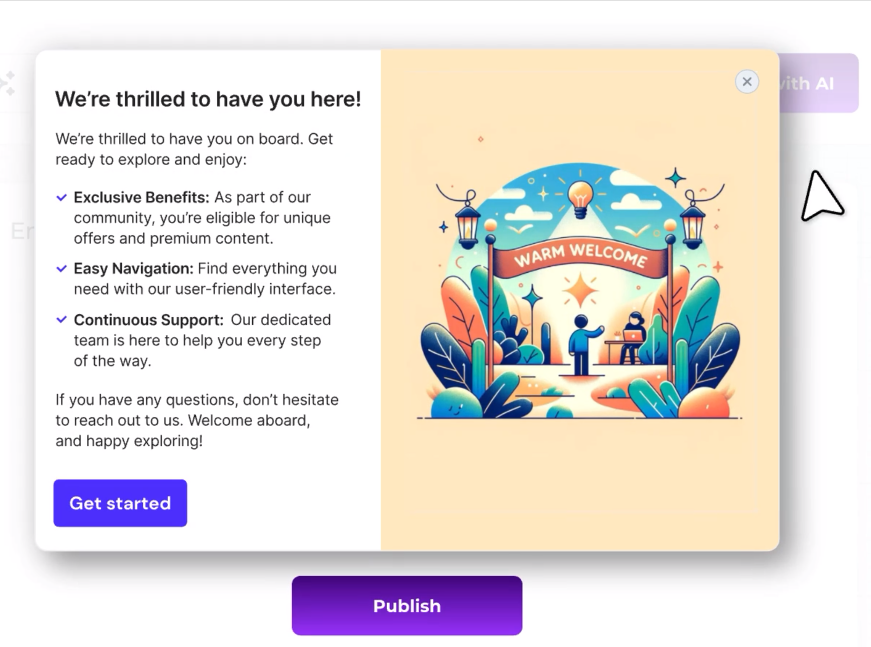
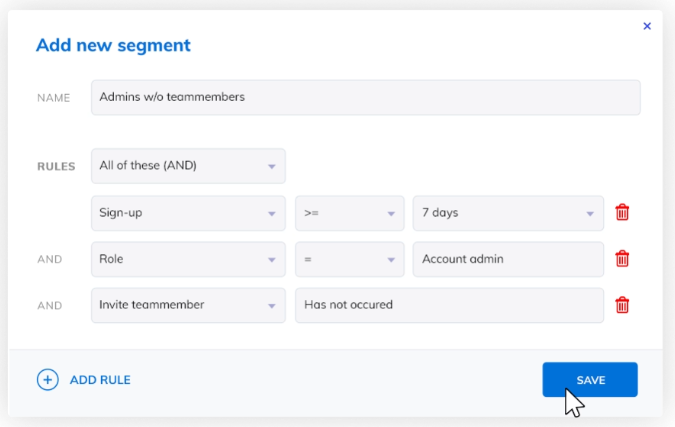
Source: Product Fruits
Cons
When we wrote this article, Product Fruits was somewhat lacking in analytics features compared to some of the other tools on the market. However, you can easily resolve this by integrating it with other analytics tools – some of which may already be in your tech stack!

Pricing
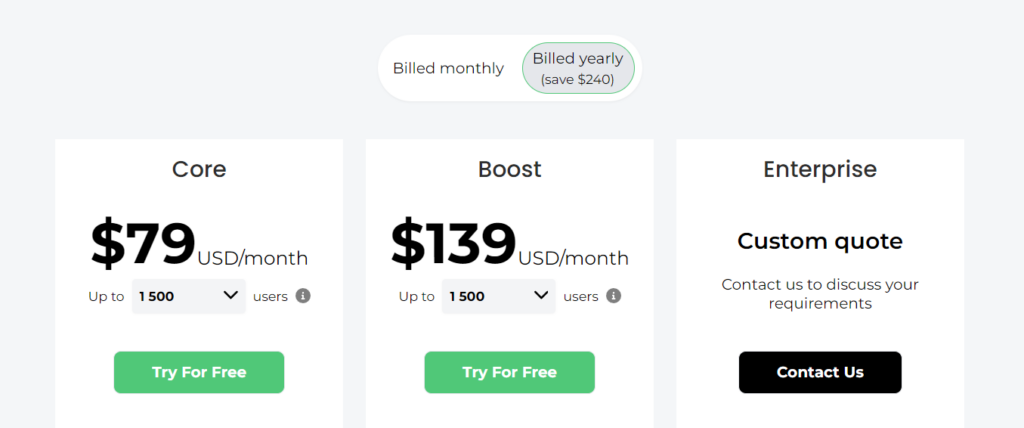
Source: Product Fruits
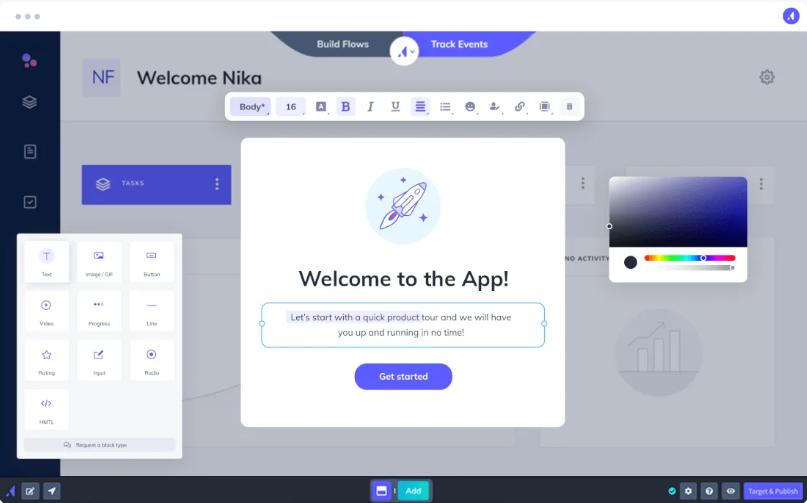
Appcues is a digital adoption platform that allows users to customize their onboarding through product tours and in-app guides without coding. It offers user segmentation, In-app onboarding flows, NPS surveys, and more features.
Pros
Cons
platforms can be a drawback for companies with strict branding guidelines.
Pricing

The Essentials plan starts at $249/month and includes features like onboarding flows and basic analytics, whereas the growth plan starts at $879/month and offers custom pricing.
👀 Take a peek at how Appcues stacks up against Product Fruits
Userpilot is a no-code product growth platform that enables customers to create in-app experiences, track user behavior over time, and collect in-app feedback. It caters to medium-sized and large SaaS B2B companies and offers behavior-based triggers, flow builder, and user segmentation features.
Pros
Cons

Pricing

It starts at $249/month and includes essential features ideal for small teams.
👀Find out who wins between Product Fruits and Userpilot Email marketing tools
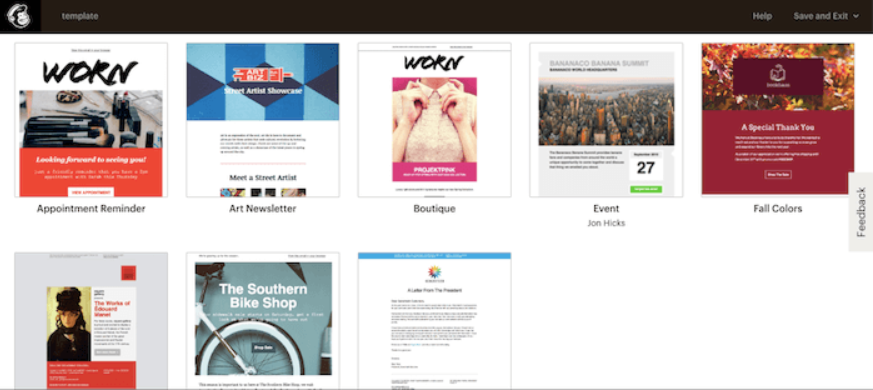
Mailchimp is an email and marketing automation platform for growing businesses. It allows you to engage customers through email, social media, landing pages, and advertising. It provides the tools to create, send, and track engaging email campaigns for your customers and subscribers.
Pros
Cons
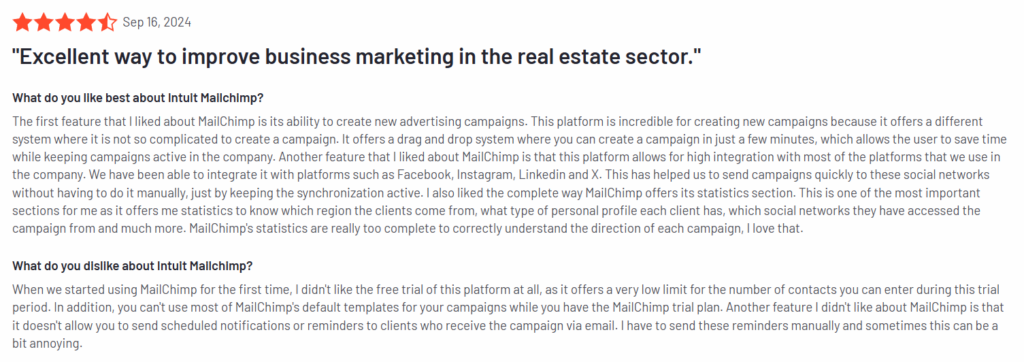
Pricing
Starts at $20 per month; however, prices and availability of free trials may vary based on your location
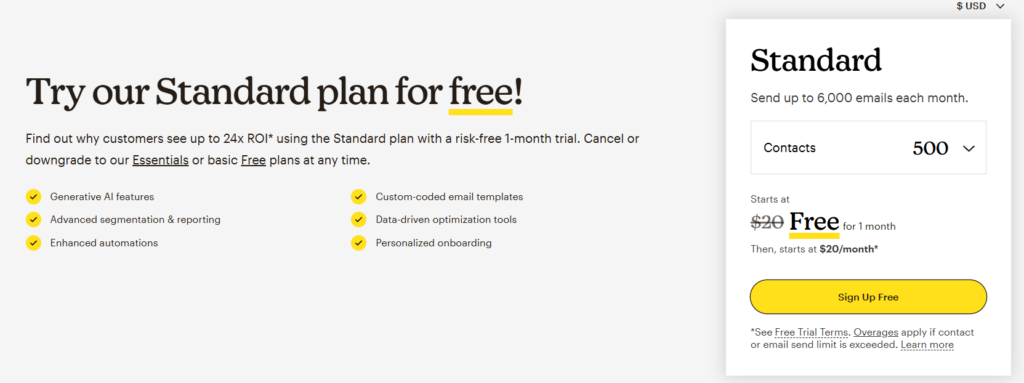
ActiveCampaign is a marketing automation platform that offers strong email marketing, CRM, and sales automation tools. It is best for experienced email marketers who want to focus on automation.
Pros
Cons
Pricing
It starts at $15 per month for up to 1,000 contacts.

Sure, other tools offer support features, but Product Fruits delivers much more. Product Fruits life-ring button acts as a 24/7 helpdesk within your app, allowing your users to find answers independently, reducing support tickets, and improving customer engagement.
Plus, it’s designed to make support instantly accessible, improving their experience from the first click!
Intercom is a customer service platform for real-time messaging, support, and personalized customer experiences. It provides live chat, email, and in-app messaging tools for improved communication and engagement.
Pros
Cons
Pricing
Starts at $74 per month for basic live chat and support.

Zendesk is a customer service platform that helps businesses manage support tickets, live chat, and knowledge bases across multiple channels. It’s designed to improve customer interactions and satisfaction through service and support automation.
Pros
Cons
Pricing
The Suite Team plan costs $49/month per agent, which covers essential support features.

Product Fruits offers more than just standard feedback tools. With our feedback widget, customers can easily share insights, screenshots, or even videos directly within your app or on your website, with no coding required.
But we don’t stop there. Product Fruits also includes NPS (Net Promoter Score) and in-app surveys to gauge satisfaction and identify user needs directly on your app or site. These help you uncover the reasons behind churn and improve user retention, all of which are integrated into your product experience.
SurveyMonkey is an online platform for creating and sharing surveys. It can be used to collect feedback, conduct research, or measure customer satisfaction.
Pros
Cons
Pricing
Starts at $25/user/month
Survicate is a customer feedback platform that helps businesses gather insights with tools like website and mobile surveys, NPS, and email surveys. It allows companies to capture feedback throughout the customer journey, making it easier to improve customer satisfaction.
Pros
Cons
Pricing
Survicate offers a “good” plan for 99 EUR/mo and a free plan with basic survey features and limited responses.

Twilio is a cloud-based communications platform that enables businesses to add messaging, voice, and video capabilities to their applications. It’s highly customizable, allowing for tailored customer engagement solutions across various channels, including SMS, email, and chat.
Pros
Cons
Pricing
Twilio offers pay-as-you-go pricing, with SMS messages starting at $0.0075 per message and voice calls at $0.013 per minute, varying by location and usage. Email API pricing is based on volume and features.

MoEngage helps marketers in consumer brands. It allows businesses to connect with users through email, SMS, push notifications, and in-app messaging.
Pros
Cons
Pricing
MoEngage’s pricing isn’t publicly available on their website. They provide a free trial for evaluation.
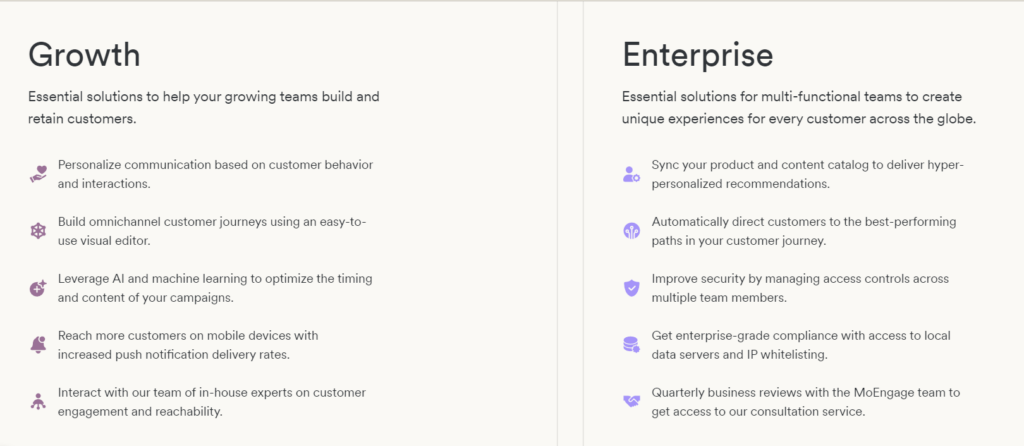
OneSignal helps companies of all sizes boost retention and revenue through fast, personalized messaging. It supports various channels, including email, push notifications, in-app messaging, SMS, Apple’s Live Activities, and more via Webhooks.
Pros
Cons
Pricing
They offer a free plan and a growth plan starting at $9.

Klaviyo is a marketing automation tool that helps businesses use their customer data. It connects with over 350 platforms to automate personalized email and SMS messages, assisting businesses in acquiring, engaging, and keeping customers.
Pros
Cons
Pricing
Klaviyo has a free plan for up to 250 contacts. Prices increase as contact numbers grow, with about 10,000 contacts costing around $175 monthly. For businesses with over 175,000 contacts, enterprise pricing can go up to $2,000 monthly.
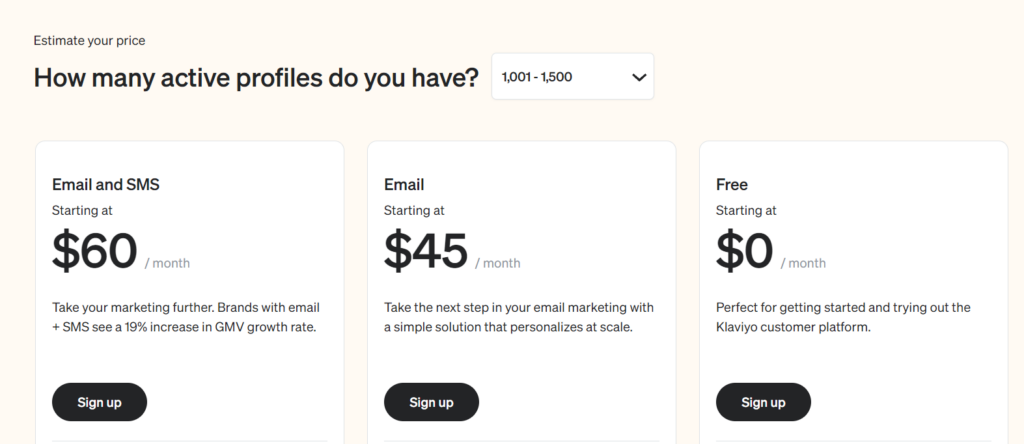
Qualtrics is a cloud-based experience management software that helps you collect and analyze feedback on customer, employee, product, and brand experiences.
Pros
Cons
Pricing
You need to contact their sales team to get a custom quote.
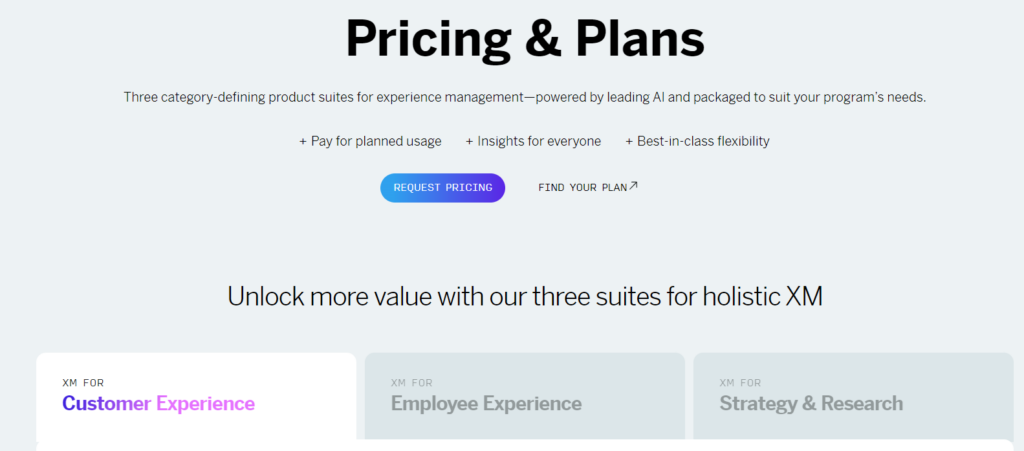
Airship is known for its mobile messaging capabilities. It allows businesses to reach customers through push notifications, SMS, email, and in-app messaging. Its key features are cross-channel journeys, no-code experiences, and app store optimization.
Pros
Cons
Pricing
Airship offers a free plan with limited features for small-scale engagement. It doesn’t list its pricing publicly for the Essentials and Enterprise plans.
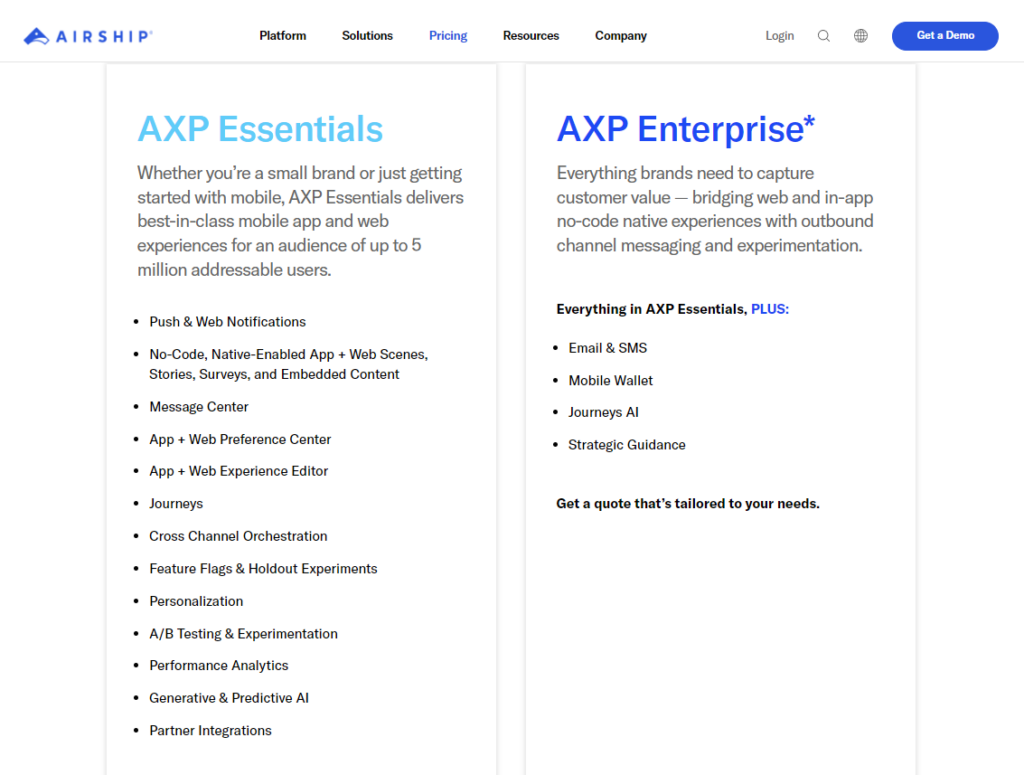
We’ve given you a list of the types of tools you’d need to build customer engagement, from email to user onboarding and customer support. But why invest in different tools when you can have a complete solution that drives engagement, adoption, and growth in one place?
Choosing the best customer engagement platform today means avoiding separate tools for each function. Consider an all-in-one solution like Product Fruits. It combines everything you need, from onboarding and in-app guidance to real-time feedback and NPS surveys, into one platform.